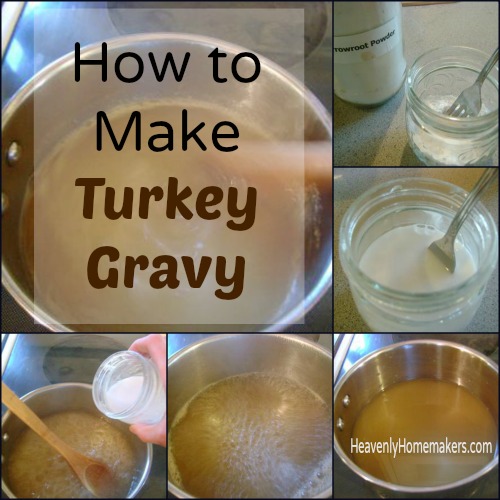Making delicious homemade turkey gravy from scratch is easier than you think with this step-by-step guide to preparing turkey stock, the flavor base for next-level gravy Whether you are a novice cook or a seasoned pro, you’ll learn pro tips for extracting maximum flavor from turkey bones to make a silky, versatile turkey stock
Why Make Homemade Turkey Stock?
Store-bought turkey broth lacks the rich flavor only long-simmered homemade stock can provide. Prepared with care, homemade turkey stock becomes liquid gold for making gravy, soup, and sauces. With a few simple ingredients, you will be surprised by the superior flavor and aroma of homemade turkey stock.
The secret that makes it so good? Roasting the bones and veggies first for a deep, caramelized flavor, then gently simmering for several hours allows the essence of the turkey bones and vegetables to release into the stock. The result is a rich, golden stock packed with mouthwatering flavor.
Turkey Stock Ingredients
Turkey stock is easy to make at home with common pantry ingredients:
-
Turkey Wings or Carcass: Bony turkey parts like wings, drumsticks, neck, and giblets provide the rich, savory flavor. The bones, skin, and cartilage are simmered for hours then strained out, leaving only the tasty liquid.
-
Onion, Carrot, Celery Known as a mirepoix, these aromatic vegetables form the flavor base of the stock
-
Herbs: Fresh or dried thyme, sage, parsley, and bay leaf infuse the stock with herbal notes.
-
Water: The liquid that absorbs flavors from the simmered ingredients. About 10-12 cups of water per batch of stock is ideal.
-
Salt and Pepper: Season to taste after straining.
How to Make Turkey Stock Step-By-Step
Follow this simple process for making the most flavorful homemade turkey stock.
1. Roast the Turkey Parts
Roasting the wings, bones, and vegetables before simmering deepens the flavor of the finished stock through caramelization. Arrange turkey wings/bones and chopped onion, carrot, and celery on a sheet pan. Roast at 400°F for 45 minutes to 1 hour until nicely browned.
2. Simmer in a Large Pot
Transfer the roasted ingredients to a large stockpot and add 10-12 cups water to cover. Bring to a boil then reduce heat and gently simmer for 4-6 hours, skimming any foam that rises to the top. Add fresh or dried herbs during the last hour of simmering.
3. Strain the Stock
Once richly flavored, strain out the solids through a fine mesh sieve. Cool completely. The fat will rise and solidify on top once chilled for easy removal.
4. Use or Store Turkey Stock
The stock keeps 4 days refrigerated or 2-3 months frozen. Freeze in batches in Mason jars or freezer bags for easy use.
Tips for the Best Homemade Turkey Stock
- Roast bones/wings for superior flavor
- Gently simmer; don’t boil
- Skim foam while simmering
- Use a fine mesh strainer
- Chill completely to remove fat
- Taste and season with salt after straining if needed
Make Gravy from Turkey Stock
Once you have homemade turkey stock, making gravy is a cinch. In a saucepan, melt butter and whisk in an equal amount of flour to make a roux. Cook 1-2 minutes until bubbling and golden. Whisk in turkey stock and simmer until thickened. Season with salt, pepper, herbs as desired.
Turkey stock is also excellent for making soups, risottos, sauces, and more. Explore how versatile this flavorful homemade stock can be in your cooking. With its rich, homemade flavor, turkey stock made from scratch easily elevates any dish.

FAQ
What is turkey stock made of?
Is stock or broth better for turkey gravy?
What is the difference between turkey broth and turkey stock?
What is gravy stock made of?
How do you make turkey gravy from pan drippings?
Gravy is only as good as its parts. Making turkey gravy from your roast turkey’s pan drippings is the secret to a good gravy. Here’s how: Strain the pan drippings from your roast turkey into a large measuring cup or fat separator and let stand for 5-10 minutes for the fat to rise to the top. Separate or spoon off the fat and set aside.
How do you make turkey gravy if you don’t have enough fat?
Reserve 3 quarts stock for gravy and refrigerate or freeze the rest for another use. In a deep skillet or large heavy pot, melt 12 tablespoons (¾ cup) reserved turkey fat over medium heat. If you do not have enough turkey fat, use additional butter to make ¾ cup.
Can you make gravy from a whole turkey?
When cooled the mixture creates a gelatinous mixture that acts as a natural thickener for gravy. If making from a whole turkey, add more liquid as the turkey cooks so the bottom of the pan doesn’t dry out and burn, or you’ll find yourself fond-less. Use homemade turkey stock.
How do you cook a roasted turkey in a stockpot?
In an 8 Qt. stockpot, add the roasted turkey bones, apple cider vinegar, salt, and 16 cups of filtered water. Bring to a boil and then lower the heat to a simmer. Skim to remove any foam and impurities that float to the top, then cover and simmer for 6 hours. Add celery, onion, carrots, garlic, and bay leaf, if using.
